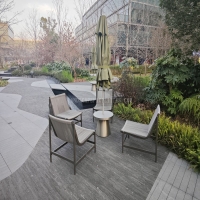Welcome to the website for landscape facilities products and knowledge.
How does the product’s design enhance or blend into natural landscapes without appearing intrusive?
In an era where human-made structures increasingly intersect with natural environments, the question of how product design can enhance rather than dominate landscapes has never been more crucial. The most successful designs achieve a delicate balance—complementing nature without competing for attention.
The foundation of unobtrusive design begins with deep environmental respect. Designers study the landscape's character, color palette, and seasonal changes to create products that feel inherently connected to their surroundings. This approach transforms installations from foreign objects into natural extensions of the environment.
Material selection plays a pivotal role in this integration process. Using locally sourced stone, weathered wood, or textured concrete that mimics natural formations allows structures to develop a natural patina over time. These materials don't just blend visually—they age gracefully alongside their environment, telling a story of harmonious coexistence.
Form and proportion represent another critical consideration. Designs that echo natural shapes—gentle curves mirroring hillsides, angular forms reflecting rock formations, or transparent surfaces preserving sightlines—create visual continuity. The most successful projects often employ subtle geometries that feel both intentional and organic within their context.
Color integration extends beyond simple mimicry. Rather than attempting to match nature exactly, sophisticated designs use complementary tones that enhance the existing palette. Muted earth tones, soft grays, and natural finishes help structures recede into the landscape rather than stand out against it.
Strategic placement and orientation complete the integration puzzle. By carefully considering how a structure interacts with sunlight throughout the day, how it frames specific views, or how it responds to seasonal changes, designers create experiences that feel inherently connected to their location. This thoughtful positioning ensures that the design serves both functional and aesthetic purposes while maintaining landscape integrity.
The ultimate success of landscape-integrated design lies in its ability to feel both present and invisible. Visitors should experience the enhanced environment without constantly noticing the human intervention that made it possible. This subtle approach creates spaces where nature remains the protagonist, with design playing a supporting role that elevates the entire experience.
Through this philosophy of respectful integration, we create environments where human innovation and natural beauty coexist in perfect harmony—proving that the most thoughtful design is often the one you barely notice.
Related search:

Recommendation
Metal structure rattan chair without armrests for single person, with woven seat and backrest.